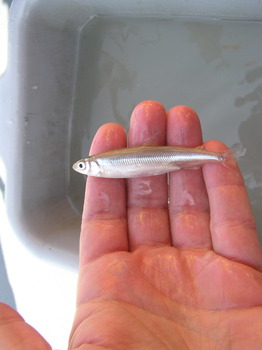August 24, 2009
California’s Latest Water War

By Michael D. Shaw
The movie Chinatown (1974) contained references to one of California’s earliest water wars—the one that was vital to the growth of Los Angeles. The gravity-fed Los Angeles Aqueduct (completed in 1913) would quench the thirst of the city, at the expense of the Owens Valley. While one can argue that the development of a great city was worth this price, there is little doubt that many politically-connected insiders, including LA Times magnate Harrison Gray Otis, profited handsomely from knowing that the San Fernando Valley would soon be irrigated.
The latest water war pits farmers against an over-reaching federal agency—aided and abetted by environmental groups that seem happy to ignore profound environmental consequences of their own actions. The big weapon in this war is the Endangered Species Act (ESA) of 1973. For the most part, economics is not considered when a species is put on the list, and commerce will often suffer.
The trigger species in our current water war is the Delta smelt (Hypomesus transpacificus) a small fish whose population has markedly declined. The Delta smelt was put on the threatened list in 1993.
A great deal of water is moved around the state—generally from the north to the south and central regions—and this requires pumping operations, which can trap and kill fish, including the Delta smelt. In light of the ESA listing, the agencies involved applied for and were granted permits from the Fish and Wildlife Service in 2005.
However, following a legal challenge from the Natural Resources Defense Council and others, pumping has been drastically curtailed, based on a revised biological opinion from the Service. Farm groups point to thousands of acres of once productive land in the fertile western San Joaquin Valley drying up and lying idle, along with unemployment rates of over 40 percent in such towns as Mendota and Firebaugh. The restrictions will cost the state’s ag industry nearly $500 million per year.
So far, more than 81 billion gallons of water have been allowed to flow out to the ocean—enough to put 85,000 acres of farmland back into production. Under other circumstances, wouldn’t the Greenies consider this wasteful? Moreover, excessively dry dust bowl conditions lead to air pollution, while an increased reliance on groundwater can lower the area’s water quality.
Sadly, these very real environmental consequences—not to mention the human consequences—pale in comparison to the enshrinement at all costs of the Endangered Species Act. This Act and the linear no-threshold model for toxic substances are the linchpins of the radical environmental movement.
Bear in mind that the San Joaquin Valley economy produces one-third of the country’s food supply, and is a significant portion of California’s $12 billion food export. As to the argument that farming should never had been done in this “naturally dry” area, one wonders how far back the Greenies would like to turn the clock. The irony is that absent life-enhancing technology, such as moving water to places where it is needed, no one would have the time or inclination to worry about endangered species at all!
The response from most politicians has been less than encouraging. They are either silent, or talk about increasing welfare benefits. An exception is former Fresno mayor and TV star Alan Autry, who compared the pumping shutoff to domestic terrorism, and called it a man-made disaster.
Potential relief will come from either successful litigation or intervention by the so-called “God Squad,” a committee with the power to countermand ESA policies. Incredibly, there are even more water restrictions on the horizon, based on new biological opinions.
A lawsuit brought by the Pacific Legal Foundation asserts that since the Delta smelt exists only in California, and has no commercial value, there is no basis for the notion of interstate commerce, and the actions of the Fish and Wildlife Service are unconstitutional.
Another suit brought by The State Water Contractors, an association of 27 public water agencies and utilities that purchase water from the State Water Project, contends that the Service failed to make use of the of the best science and data available when drawing up the biological opinion. The Contractors hold that the Service was aware of other factors contributing to the decline of the Delta smelt population, such as invasive species, toxic runoff from pesticides and waste treatment plants, and non-native predator fish introduced for sport fishing, but did not explore these factors while developing the biological opinion.
Last May, Lester Snow, director of the California Department of Water Resources, announced that research done by his group and the California Department of Fish and Game has revealed the existence of a separate delta smelt population in an area that is not affected by state water operations. The population in question is thriving in a tidal marsh around Liberty Island in the northern delta.
Maybe someone will make a movie about this whole mess. Based on when Chinatown was released in relation to the events depicted, we should be looking for it around 2070.

